Each school day at 2:35 p.m., Joshua Jones enters a classroom at Crescent City Junior-Senior High School and settles into an agriculture class for eighth graders.
It’s the only class Joshua attends at the school, located about six miles from his home. And it caps the academic portion of his day, which starts at 8:30 a.m. sharp when he and his younger siblings, Jacob (sixth grade) and Kylie (fourth), begin their home education with their mother, Ashley.
The Jones children receive Personalized Education Program (PEP) scholarships available through the Florida Tax Credit Scholarship Program and managed by Step Up For Students. PEP offers parents flexibility in how they spend their scholarship funds, allowing them to tailor their children’s learning to meet their individual needs and interests.
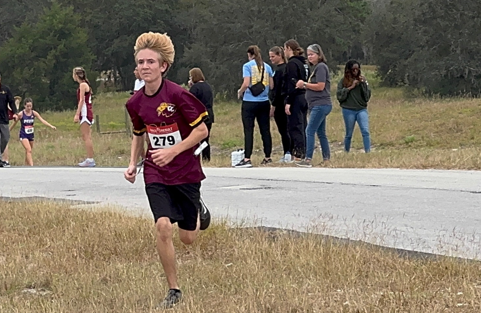
PEP allows families access to services and classes at public, charter, or virtual schools, adding another layer to hybrid learning for those who home educate.
Since the passage of PEP as part of House Bill 1 in 2023, 36 of the state's school districts are offering services to students with education savings accounts, with 12 more in the pipeline, according to Keith Jacobs, director of provider development at Step Up For Students. Those include some of Florida's large districts, such as Miami-Dade, Orange, and Hillsborough, as well as more rural districts such as Baker and Putnam, where the Joneses live.
That’s a welcome addition to the more than 500,000 students who are using state K-12 scholarship programs in Florida, where 51% of all students are using some form of choice.
Ashley and her husband, Daniel, use a portion of Joshua’s PEP funds to pay the Putnam County School District for Joshua to take the agriculture class and the fees for him to run cross country and play junior varsity soccer and baseball for the Raiders.
“This is a good opener for this year to figure out how this will work and if he will like it,” Ashley said.
Ashley used to teach elementary school music, art, and physical education. She is currently the girls' varsity volleyball coach at Crescent City Junior-Senior High and runs the local club volleyball program. Three years ago, she and Daniel, the pastor at South Putnam Church in Crescent City and a nurse at a hospital in Palatka, decided to home educate their children.
“The class sizes just were not feasible to me,” Ahsley said. “There were too many kids in the classroom. I love their teachers. I know them personally, but somebody’s going to get left behind. Somebody’s not going to get everything they need.
“Daniel and I decided that since I'm teaching kids anyway, I should be teaching mine. They're going to get so much more out of it, because it's just me and them.”
Joshua said he enjoys learning at home.
“We get done with school a lot quicker and have a lot more time to do things while still being able to learn,” he said.
Ashley teaches her children from 8:30 a.m. until the early afternoon. After that come chores and activities they can do outside in the fresh air and sun.
“My thing is this: I have intelligent children who I can teach, and they can be advanced and do it as fast as they want to, and that’s great. It just makes sense to me. This is the best model for us,” Ashley said. “I know it's not for everyone.”
The children are active in the community, are involved in sports and have a ton of friends, especially Joshua.
“He enjoys his social life,” Ashley said.
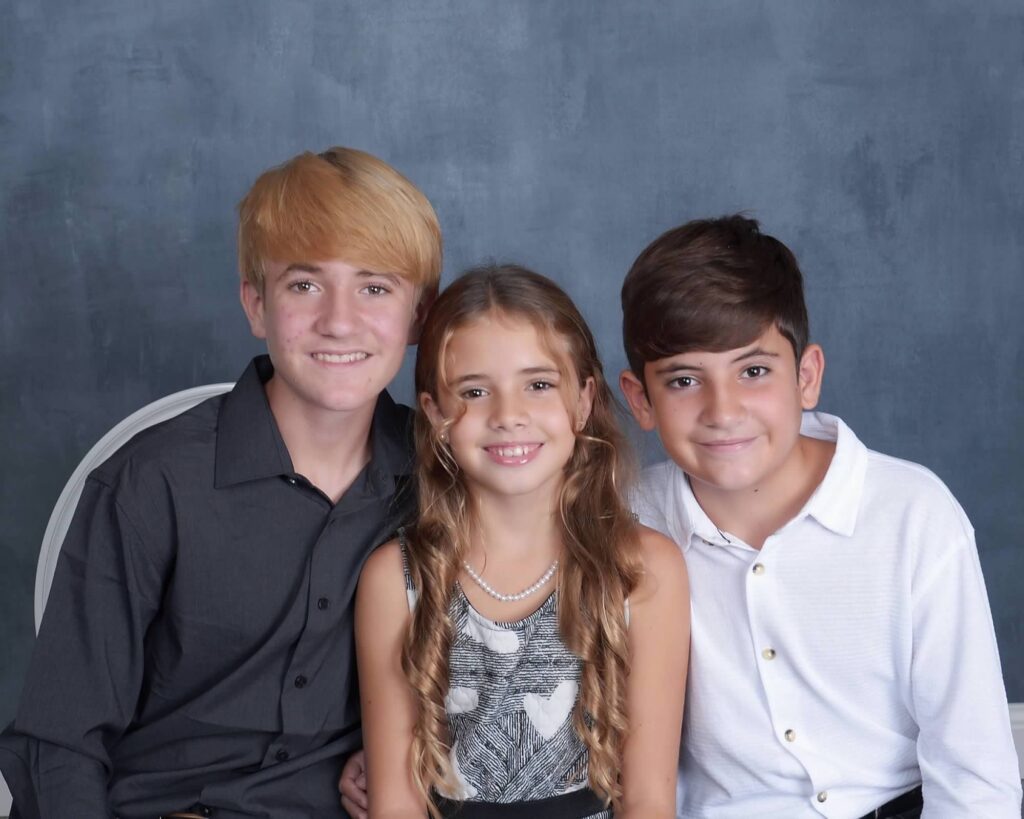
Crescent City is a small community. The city itself is less than three square miles with a population of fewer than 1,700. Ashley said it doesn’t lend itself to home education co-ops and chances for the Jones children to interact with other home-educated students during the day.
“That was the biggest piece that was missing for Joshua, going to school and seeing friends,” Ashley said.
So, when the opportunity was created for Joshua to return to a brick-and-mortar school, even on a limited basis, his parents pursued it. The agriculture class meets during the last period of the day, and Joshua was headed there anyway for sports.
Ashley called it a “great compromise.”
“He's going there to do something that he likes,” she said. “He loves the animals. He loves to learn about them. He’s going there for one of his electives, so that's one less thing that we do at home.
“He's already going to the school at the end of the day anyway, so now he just gets to see his friends and interact with people, and he's in a teacher setting, which I think is a good thing, too. It is hard when it's always mom. So, I think having a teacher also teaches life skills, so I don't think that's a bad thing at all.”
Joshua said he wants to continue with an agriculture class next school year. He would also like to join Future Farmers of America.
“It’s fun,” he said. “I get to go back to the school so I can still hang out with my friends and still get to take a class there.
“I do love learning about animals.”
ST. PETERSBURG, Fla. – Life, it’s often said, is what happens when you’re making other plans.
Tasia Mathis planned on joining the U.S. Navy Reserve. Then her grandmother, with whom Tasia and her younger brother Jeremiah lived with, died suddenly from complications of kidney failure.
“The papers were signed, but I wasn’t able to go through with it,” Tasia said. “I had to make sure he was OK.”
Tasia, 20 at the time, became her brother’s guardian.
While Tracy Crawford’s passing in June 2023 ended Tasia’s goal of joining the Navy, it didn’t end her goal of a bright future for herself and Jeramiah.
For that, she credits Florida's private school scholarships managed by Step Up For Students.
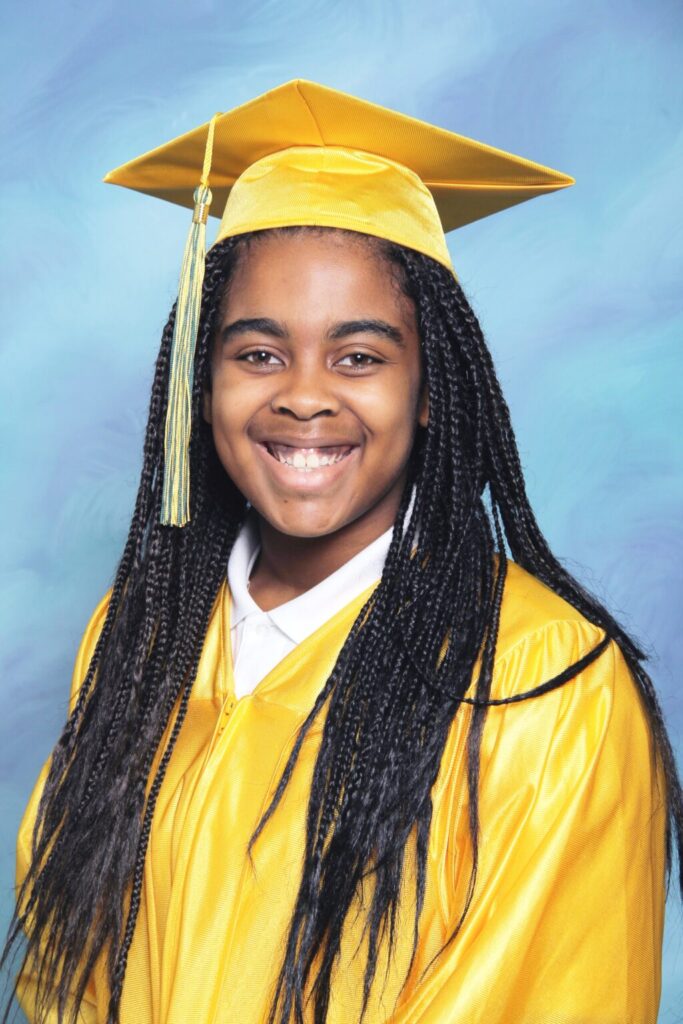
The scholarships enabled Tasia, now 22, and Jeremiah to attend Academy Prep Center of St. Petersburg for middle school and allowed Jeremiah, 15, to continue his private school education at Admiral Farragut Academy in St. Petersburg, where he is a sophomore this year.
“(The scholarship) gave us the opportunity to go to a school that we probably wouldn't be able to go to,” Tasia said. “It gave us the opportunity to expand our knowledge so good things can come into our lives.”
Tasia is studying to become a phlebotomist and works as a teacher at the Academy for Love and Learning in St. Petersburg.
Jeremiah would like to attend the United States Air Force Academy and work in cybersecurity.
The two, who share an apartment in St. Petersburg, have goals and are working toward them with a determination forged by Tracy Crawford, their grandmother, and reinforced by their years at Academy Prep.
“They don’t let you give up,” Tasia said when asked what she liked about attending Academy Prep. “Even if you had issues, they never let you give up.”
Could you blame them if they did?
Tasia was 8 and Jermiah was three weeks old when their mom died. Staci Crawford was only 34 when she suffered a heart attack. That left the children in the care of their grandmother, whose failing health forced Tasia to find work as a counselor at the Police Athletic League when she was 14.
“I had to help out with the bills,” she said. “By the time I was 16, I was cooking, washing everybody's clothes, helping my grandmother out the best I could.”
So, when asked what it’s like to have his sister as his guardian, Jeremiah said, “It’s kind of all I’ve known.”
Tracy wanted Tasia to attend a school that would challenge her academically and offer a safe environment. That’s why she used the private school scholarship to send her to Academy Prep.
At first, Tasia said, it wasn’t a good match. She was not a fan of the school’s long days (7 a.m. to 5 p.m.) or the fact that she had to wear a uniform.
“It took her a while to buy in, and then once she did, she was a high-achiever, and she set the tone for the other kids,” said Lacey Nash Miller, Academy Prep’s executive director of advancement.
For that, Tracy gets a big assist.
“She made sure my grades were straight, my attitude was straight,” Tasia said. “By seventh grade, it all came together.”
For high school, Tasia attended her assigned school because it offered a BETA (Business, Entrepreneurial, Technology Academy) program that interested her.
Jeremiah attended his assigned elementary school, but Tracy wasn’t a fan of his assigned middle school.
“It wasn’t up to her standards,” Tasia said. “She wanted to challenge him.”

So, like his sister, Jeremiah headed crosstown to Academy Prep, where he said he benefited from the school’s academic environment and the self-discipline the teachers try to instill in the students.
Jeremiah said he became more extroverted during his years at Academy Prep.
“I was naturally a quiet person. I didn’t talk much,” he said. “Now, I talk to people. I try to start conversations.”
He also credited his teachers, specifically Zack Brockett, a science teacher, for guiding him toward being a young adult.
“He pushed us to grow up, so that we can go into high school as mature students,” Jeremiah said.
His teachers at Academy Prep describe Jeremiah as a quiet student who completed his assignments on time, helped out around campus, and amazed them with his drawing ability.
“Jeremiah is very self-driven,” Britanny Dillard, Academy Prep’s assistant head of school, said. “He’s one of those people that you kind of underestimate because he's so quiet that you don't even truly realize the talents that he actually has. He’s not the first to raise his hand, but he knows the answer.”
Jeremiah was a member of the school’s track team. He threw the shot put and discus. At graduation, Jeremiah received the Priscilla E. Frederick Foundation, worth $1,500 toward the balance of his freshman year tuition at Admiral Farragut. Frederick is a former Olympic high jumper who competed for Antigua and Barbuda in the 2016 Summer Games. Her foundation awards scholarships and grants to students raised in single-parent households. Jeremiah was the first Academy Prep student to earn that scholarship.
He is a soft-spoken, unassuming young man with a growing vinyl record collection and an interest in graphic novels and comic books. He will participate in track and field this year and will take an aviation class, which he feels will benefit him when he gets to the Air Force Academy.
Jeremiah spends his high school volunteer hours at Academy Prep. He helps grade papers, organize classrooms, and move supplies around campus.
Jeremiah and Tasia are spoken highly of at Academy Prep. Both Dillard and Nash Miller said they were “heartbroken” when they learned of Tracy’s death, and both admitted they were worried for the future of the siblings.
“They only had each other, and I think it speaks highly of Tasia that she was willing to accept that role,” Dillard said.
Said Nash Miller: “The news that her grandmother passed just gutted me. She had all these plans, and she just cancelled them to be her brother’s primary caregiver. What a superhero to put her brother’s needs ahead of her own.”
The category is “Lifelong dreams.”
These are the clues.
Many find this experience fun, exciting, and a little scary.
What is being on “Jeopardy!”?
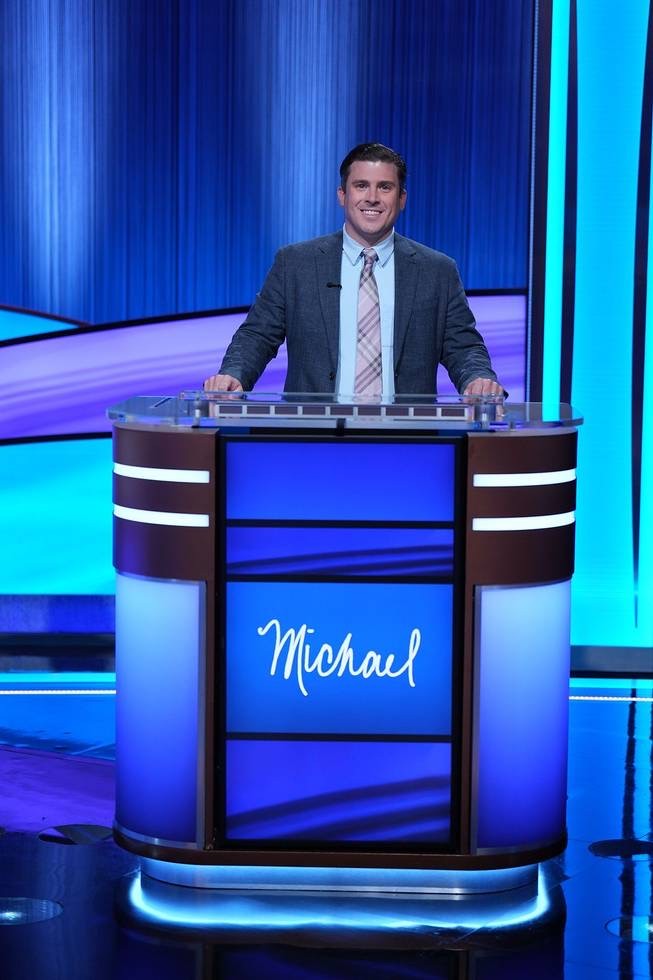
The answer is correct if you’re Michael Kavanagh, principal at Holy Family Catholic School, a K-8 parochial school in Jacksonville.
For as long as Michael can remember, he wanted to appear on “Jeopardy!,” the game show where the answers are given, and the contestants guess the questions. A dream that became a goal when Michael reached high school became a reality when he appeared on the show that aired on Nov. 24.
Michael placed second among the three contestants. He was a perfect 12-for-12 in his answers, including “Final Jeopardy!,” when he was the only one to successfully answer the question. He earned $12,600.
“To be able to say that I accomplished something that I've wanted to do since I was a kid, to be able to actually pull it off and get on the show, that was really just a dream for me,” Michael said.
All but a handful of Holy Family’s students attend the school with the help of a Florida education choice scholarship managed by Step Up For Students. Many watched their principal live out his dream, which made Michael the big man on campus when school resumed after the Thanksgiving break.
And maybe a role model.
“Step Up exists to give children opportunities, to give children a chance to go to a great school and get a great education,” Michael said.
And with that education, well, they too can someday be on “Jeopardy!,” if that’s a goal they want to chase.
“That's what I hope our students see the value in,” Michael said. “I didn't use my athletic abilities. I didn't use my strength or anything like that. I was fortunate enough to go to great schools and learn from great teachers, and I used that knowledge to pursue something that I really loved.
“I think it just shows you that when you have an opportunity, and when you have a dream, and you want to follow it, all these things are possible. So, I do hope that maybe being a role model for someone as a ‘Jeopardy!’ contestant, that's maybe a little bit of a nerdy thing to do, but I do hope it shows the kids that there's value in learning and there’s value in pursuing your dreams.
“It's good to be smart.”
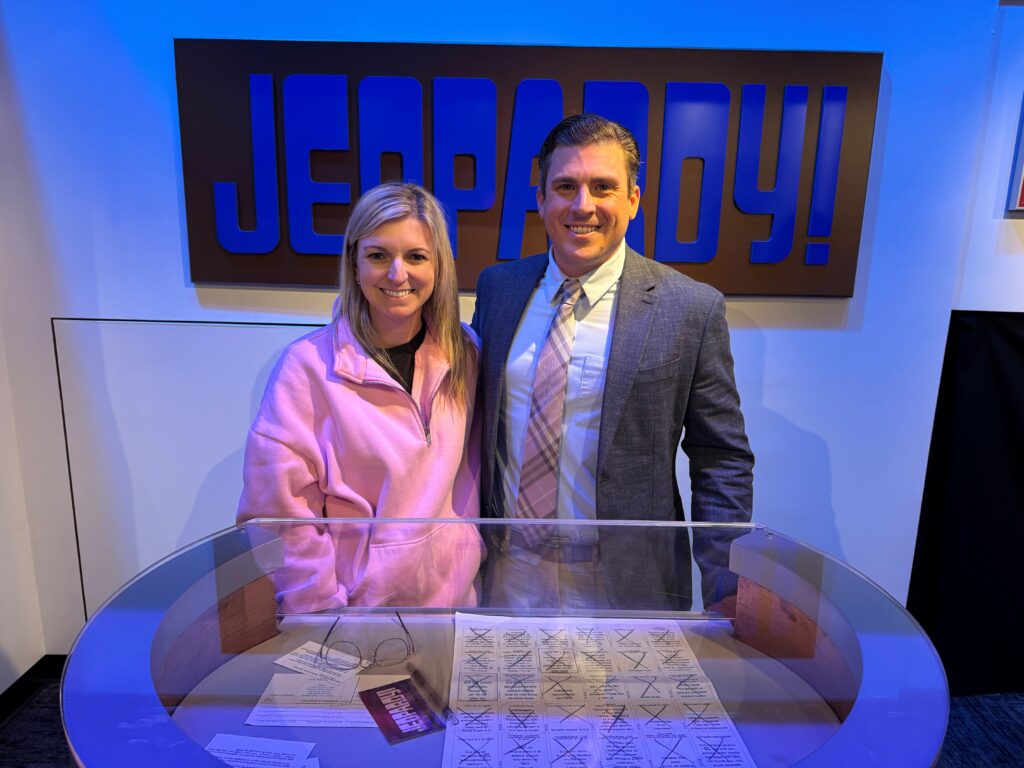
To be selected for “Jeopardy!,” Michael had to pass an online test, then an interview. He had taken the test several times, but this was the first time he was interviewed. In September, he received the call. He would be on the show that was taped Oct. 21.
What is ecstatic?
Michael was told by the show’s producers that 70,000 people take the test each year, but only 450 make it to the show.
“Just being there, you’re in pretty elite territory,” he said.
Michael and his wife, Allison, flew to Los Angeles for a three-day trip. They had to keep the results to themselves until after the show aired.
While Michael didn’t win -- Harrison Whittaker from Terre Haute, Indiana, extended his winning streak to 10 games that day – he was the only one who answered every question correctly.
Other than reviewing the names of Shakespeare characters, U.S. vice presidents, and capitals of foreign countries, Michael said he didn’t study for his big moment. It’s nearly impossible when the show’s producers can pick from a nearly endless list of categories, or, as they did that day, create one where the contestants were given two words and had to change the last letters to form another word.
Michael entered with the random facts accrued over a lifetime of being curious.
“It was just stuff that I've picked up over 40 years of listening, and reading, and studying,” he said. “I'm very blessed with a mind that is always curious and remembers facts that I find interesting. For me, I think everything is interesting.”
It was a combination of facts that led him to the correct answer to “Final Jeopardy!,” the last question of the show and the one that often determines the winner.
The clues:
He wasn't yet a U.S. citizen when he was named an All-American and won two Olympic gold medals for the country.
Michael had 30 seconds to answer.
“I didn’t actually know the answer,” Michael said.
But he knew Jim Thorpe was a Native American, and he knew Thorpe was an Olympic champion, and knowing what he does about American history, he figured Native Americans were probably not considered American citizens at that time.
Who is Jim Thorpe?
“I was able to piece together all of those little bits of information to come up with a really confident guess as to what the answer was,” Michael said. “So, it was a lot of problem-solving, too. A lot of ‘Jeopardy!’ is not, ‘Do you know facts?’ It's, ‘Do you know this fact, and can you use it to lead you to something else?’ ”
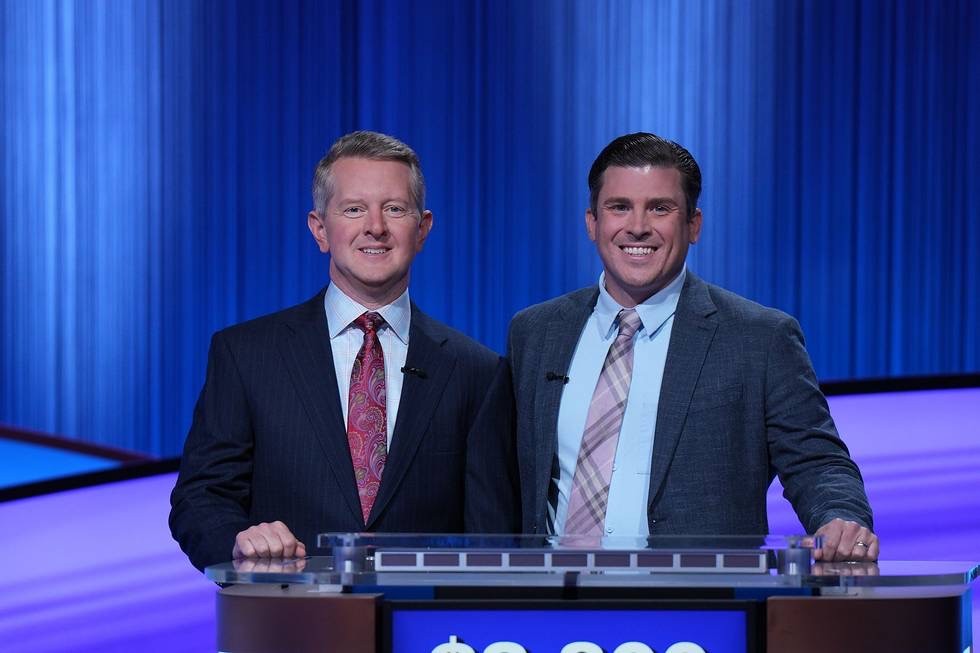
“Jeopardy!” tapes a week's worth of shows on Mondays. Michael’s show was the first one that was taped. Afterward, he sat in the audience with Allison and watched two more shows.
Each show is 30 minutes, but because of commercials, contestants are on air for only 22 minutes. Add a few practice questions before taping began, the excitement of being on the iconic “Jeopardy!” set, and the mental energy needed to come up with answers in a split second, and Michael was a little worn out when it was over.
“It’s a competition,” he said. “It's not athletic, but you definitely feel like your body has gone through something. Your brain was spinning, and your heart was racing, and then it's over, and you take a deep breath, and you realize that's it. I'm done. And that was incredible.
“Honestly, it's more like riding a roller coaster, and you get off, and you think, ‘Well, that was fun and exciting and a little scary.’”
HAVANA, Fla. – It was a typical July afternoon in Florida’s Panhandle. The air was hot and sticky, and the sun hid behind the dark gray thunder clouds building to the north of Robert F. Munroe Day School in Havana.
A warm breeze kicked up, signaling the approaching late-day storm.
The students who darted about earlier during summer camp, and the staff and teachers who spent their day on campus preparing for the upcoming school year, were mostly gone.

Andy Gay, head of school, remained. So did Shanna Halsell, director of advancement and marketing. They spent the better part of the day with a visitor, explaining the efforts necessary to keep Robert F. Munroe Day School (RFM) open, despite financial shortcomings, an exodus of teachers, and declining enrollment that not too long ago threatened to close the private pre-K-12 school.
But that gloomy forecast never happened.
In Gay’s first three years on the job, enrollment has increased, and test scores are on the rise.
Several factors came into play for the turnaround, including the expansion of Florida’s education choice scholarship programs managed by Step Up For Students.
“The Step Up scholarship saved this school,” Gay said. “This school has always been on the verge of shutting down, and we’d have closed without it.”
But RFM’s story is more than just the creation in 2022 of the Family Empowerment Scholarship for Educational Options, which increased the income requirements for eligible families, making a private school education more affordable to families.
Parents need more than money to send their children to a private school. They need a reason to send them there.
And that’s where Gay comes in. He is a graduate of RFM. So is his wife, and so are his two sons and his daughter.
“We’re a Munroe family,” Gay said. “I love this place. It has a soft spot in my heart.”
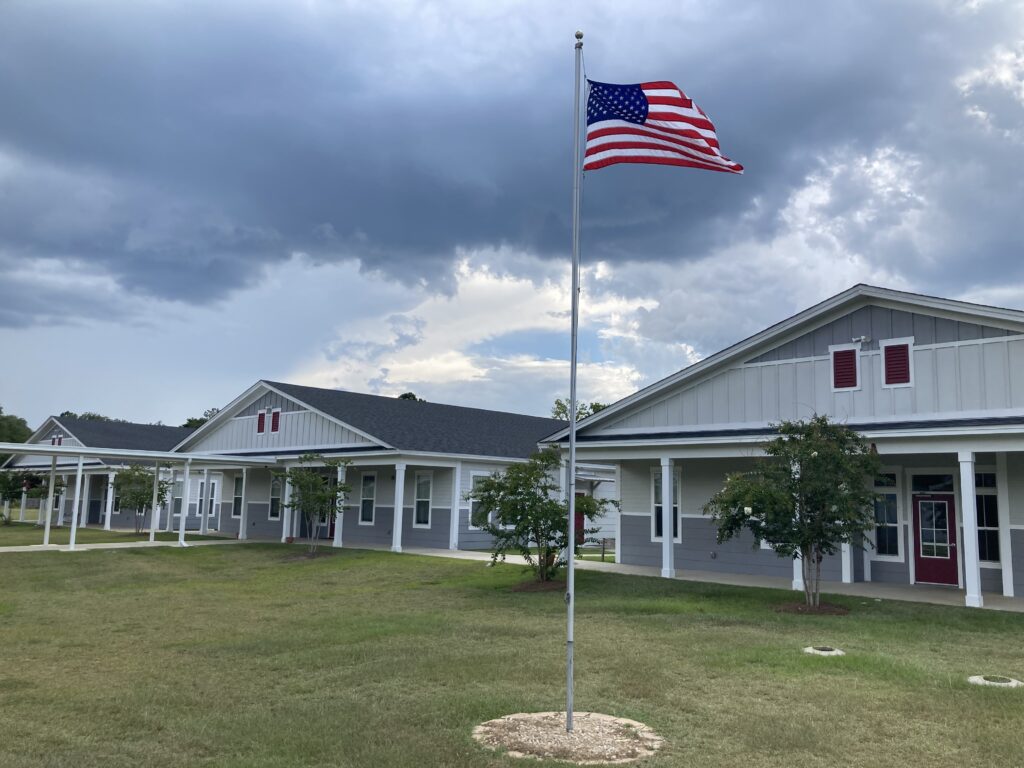
That’s the reason RFM’s board of trustees sent an SOS to Gay before the start of the 2022-23 school year.
“We needed him,” Libby Henderson, the immediate past president of the school’s board of trustees, said.
A native of Gadsden County, Gay has deep roots in the community. And, as a former teacher, coach, and administrator in the county school district, Gay is well-versed in how to run a school.
Also, he was available.
Sort of.
Gay had just retired after 32 years in education. He was ready to spend his days fishing and playing with his grandchildren.
That lasted two weeks.
“He indicated he was interested and could be talked out of retirement,” Henderson said.
Gay, who always wanted to run a school, accepted the offer, telling the trustees that he would work for two years. This year is his fourth as head of school.
“I don’t know,” he said, “I fell in love with the job.”
Eventually.
Gay admitted that what he found when he took over was not what he expected. The test scores for reading and math were below grade level.
“I saw a lot of disturbing data, and I knew that there had to be some drastic reform,” he said.
Where to start? The faculty.
Gay filled the vacancies with a mix of seasoned teachers and college graduates.
“It's always been my philosophy that there's no one more important than the teacher in the classroom,” Gay said. “So, I got busy trying to hire people that I knew would get the job done, that I could trust, that I knew.
“With the young teachers, I felt that we could give them the support they needed and turn them into good teachers.”
Gay has coached football and track. He won back-to-back state track titles and came within three points of winning a third straight. He knows how to build a staff of assistant coaches. You hire coaches for their expertise and let them coach.
It’s the same with the teachers.
“The cool thing about Andy that I love is he’ll help you if you need help,” said Anthony Piragnoli, who is in his sixth year at RFM and teaches high school English and coaches the middle school football team. “Now, if you're a new teacher and you kind of need some help, he'll definitely help you out and give you all the resources and all the tools you need. But if you're more experienced, he kind of lets you, I don't want to say do your own thing, but he gives you the freedom to teach the way you want to teach.”
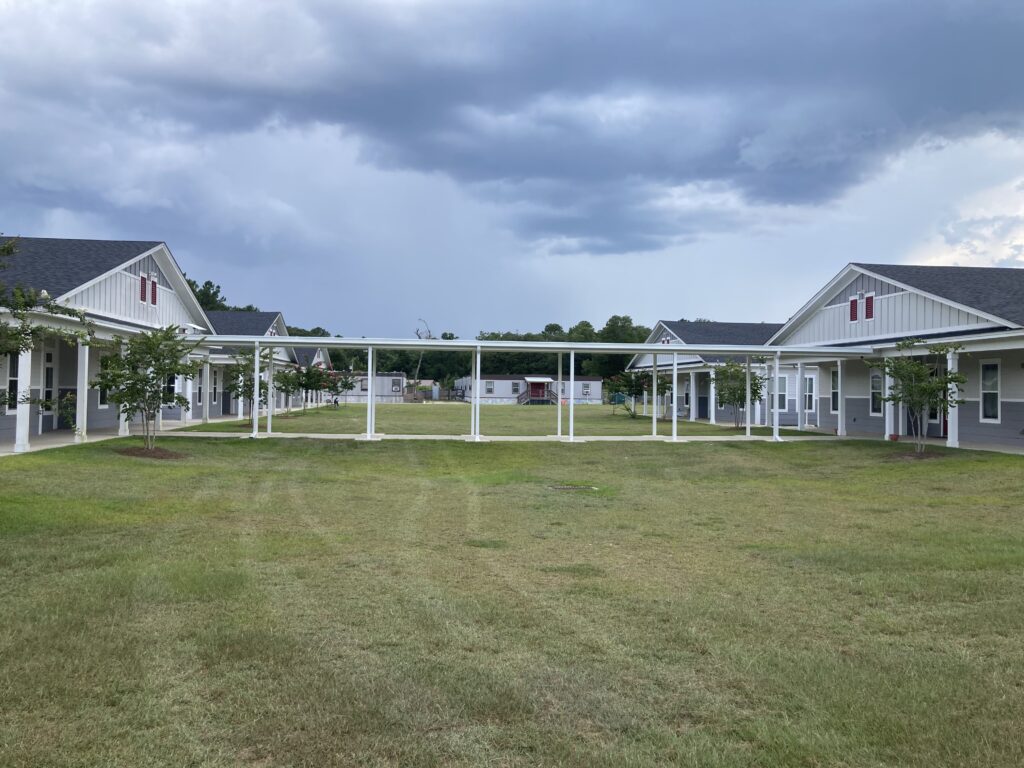
Of course, nothing is more important to a school than the students themselves. To raise the academic bar, Gay and his staff created a welcoming, yet demanding culture.
“It’s all about the expectations you put on the kids,” he said.
And the expectation was that they would become better readers.
Gay instituted DEAR Time, which stands for “Drop Everything And Read.”
A first-grade teacher came up with the idea for the Bobcat Buddy Program, which pairs upper school students with lower school students for mentorships and companionship.
That led to Bobcat Buddy Book Day, where upper school students bring a book or check one out from the library to read to their lower school buddy.
“You go out on campus, and you see kids lining the sidewalk or on the playground, and the big buddy is reading to the little buddy, and I think that is wonderful,” said Dawn Burch, director of education.
The programs work. Two years ago, only 48% of RFM students were reading at grade level. That has increased to 73%.
Halsell’s data shows the school experienced 93.8% growth across the board in reading, math, and science since Gay took over. Last year, 13 of 30 seniors graduated with associate's degrees through the school’s newly implemented dual enrollment program.
But it takes more than just the teachers to get students to work harder. The parents have to buy in, too.
“I want partnerships between parents and teachers,” Gay said. “It can’t be adversarial. I found it makes a huge difference in the overall academic growth of the child when there is a partnership.”
Toward that end, parents are always welcome on campus. Teachers are encouraged to call parents when their child does something positive in class.
“We can call about good stuff, too,” he said.
There is an excitement around RFM that hadn’t been there in years, Henderson said. Last year’s alumni golf tournament raised $25,000, which went toward the school’s curriculum. Halsell works tirelessly to reconnect with alumni and build a network of donors. She recently announced that the school secured a $500,000 grant for its STEM program.
The school sits on 44 acres with plenty of room to expand. A new gymnasium would be nice.
Those rain clouds that appeared over the school on that July afternoon did little more than threaten. Much like the metaphorical storm clouds that were forming when Gay took the job.
“He’s done a phenomenal job,” Henderson said.
Two years turned into four for Gay, and four can turn into who knows how long.
“I feel like I will stay here as long as I continue to see progress and I continue to feel good about this place,” Gay said. “Right now, I feel like we're on the verge of some greatness.”
If anyone needs more proof that the future of education is in Florida, take a look at the winners of Thursday night’s Yass Prize Awards. Six Florida-based providers, including two finalists who took home $250,000 each, were among the 23 honored for their innovative and scalable programs.
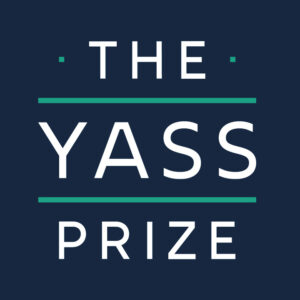
One of the finalists, Pepin Academies, is a charter school network with three campuses in the Tampa Bay area. It offers students with learning disabilities in grades three through 12 an inclusive environment where academics and essential therapies happen together in real time.
“I have always rejected the principle that we have to think outside the box for students with disabilities,” said Jeff Skowronek, executive director of the 25-year-old network. “A truly inclusive society is one that understands how to make the box bigger.”
Pepin stands out for its small class sizes, ESE-certified teachers, and onsite specialists, including mental health counselors, social workers, speech-language pathologists, occupational therapists, ESE specialists, and registered nurses, according to Yass Prize offices. This ensures their children receive individualized attention throughout the entire school day. In addition to its schools, Pepin operates a transition program for young adults ages 18-22.
According to Yass Prize officials, the award empowers Pepin Academies to serve students earlier, expand their transition program, and bring their therapeutic model to more families seeking a school that understands and supports exceptional learners at every stage.
The other finalist, WonderHere, is a network of child-centered microschools that focus on play-driven, project-based learning and personalized education to let children learn at their own pace.
“We are so excited and grateful to the Yass family and the Center for Education Reform for selecting WonderHere as a finalist,” said Tiffany Thenor, who opened the first campus in Lakeland after spending seven years in the public education system. She opened WonderHere to challenge the norms of schooling and prove that learning can be more joyful, flexible, and deeply human. A second location opened later in Anderson, South Carolina, and a third is planned for Davenport, Florida, near the original location.
Thenor said the prize money will help her find a permanent location for the Davenport campus and create more space for families to experience the “project-based, family-centered, wonder-filled learning environment” that WonderHere offers.
The following Florida providers were named semi-finalists and received $100,000 each: Archimedean Schools of Miami; Space Florida, Merritt Island; Ecclesial Schools, Oviedo; and GuidEd, a Tampa-based bilingual program that provides free, unbiased information about educational choices to help families determine the best fit for their children.
“GuidEd looks forward to using our Yass award money to enhance our call center capabilities to provide more sophisticated and personalized 1:1 support for families and to reach new families who may be entering the education freedom marketplace for the first time," said Kelly Garcia, who founded GuidEd with her brother-in-law, Garrett Garcia.
The Yass Prize, often called the “Pulitzer of Education Innovation,” began in 2021 to recognize innovative educators who delivered top-tier learning during the COVID-19 pandemic. Philanthropists and education choice champions Jeff and Janine Yass established the award and continue to fund the program.
The top winner takes home a $1 million prize. This year, it went to Chesterton Schools Network, a national network of classical high schools rooted in Catholic values. Though headquartered in Minnesota, Chesterton has Florida schools in Orlando, Pensacola, Sarasota, and Vero Beach, with a fifth set to open in 2027 in Melbourne. Primer Microschools, which began in Florida and has expanded to other states, won the grand prize in 2024. That year, it announced the establishment of Primer Fellowship, which provides paid training for edupreneurs seeking to open Primer Microschools in their communities.
CLEARWATER, Fla. — A check recently arrived in the mail for Landon Green, his compensation for the two hours he spent autographing baseball cards of himself one day last summer.
He signed 2,000 cards and was paid $1 for each signature.
That’s a nice payday for anyone, especially a 17-year-old high school junior who is among the top pitching prospects in the nation, one who is very much on the radar of top collegiate programs and Major League Baseball teams.
The landscape of amateur sports has shifted dramatically over the last few years, allowing athletes to benefit financially from their Name, Image, and Likeness (NIL) without jeopardizing their amateur status.
Likewise, the landscape of K-12 education in Florida has changed significantly with the expansion of education choice scholarship programs.

Landon, who is home-educated, receives a Personalized Education Program (PEP) scholarship available through the Florida Tax Credit Scholarship Program managed by Step Up For Students.
PEP, now in its third year, provides parents flexibility in how they spend their scholarship funds, allowing them to customize their children’s learning to meet their individual needs and interests.
“It allows us to select his academics based on his future, to study what we think will help him in his future,” Landon’s mom, Michele Donton said.
For Landon, that’s finance, business, and leadership – courses that will guide his financial potential. The scholarship also covers the cost of strength, conditioning, and mobility training – sessions that will help him improve athletically. Landon spends two to four hours a day either playing baseball or working on some aspect of his game.
“PEP gives us the flexibility to work around his schedule,” Michele said.
Morning workouts mean afternoon classes and vice versa. Also, Landon can still complete his schoolwork when he travels out of town for a tournament.
“I think (the PEP scholarship) is very beneficial for him, because he's not the typical go to school type of kid,” Landon’s father, Lamon Green, said.
Stacked among the textbooks on a table in the family’s Clearwater home is one published by the financial services firm Morgan Stanley titled “The Modern Athlete's Guide to Life, Money and NIL.”
Yellow sticky notes earmark chapters on “Smart Money Savings,” “The Business of You,” “Investing in Your Future,” and “Philanthropy & Legacy.”
It’s an important resource for someone like Landon, because the check he received for autographing baseball cards will be the first of many. He also has two NIL deals with athletic apparel companies. Opportunities for more deals can increase over the next two years as his career progresses.
“This kind of helps him and guides him through all of this,” Michele said. “It's the NIL bible, to be honest with you. It teaches you everything and anything you need to know.”

The days of teen-age baseball players being scouted during high school games by representatives from college and professional teams ended years ago. Now, top college and pro prospects like Landon attend showcase events around the country that draw scouts and evaluators from all 30 Major League Baseball teams as well as college coaches. Prospects play for travel teams, some of which draw from a nationwide talent pool.
Landon is also a regular at the USA National Baseball Training Complex in Cary, North Carolina. That’s where he autographed those baseball cards, and that’s where he attended financial seminars.
The National Collegiate Athletic Association (NCAA) changed its rules in 2021 by recognizing athletes as a brand and allowing them to profit from their identity. It wasn’t long before that trickled down to high school athletes.
So, not only is Landon a baseball prospect, but he is also a brand.
To that, he shrugged his shoulders.
Landon runs toward the quiet. He’s very businesslike on the pitcher's mound, retiring batters with not much fanfare.
“He’s very humble,” said his mom.
Landon’s answer when asked about his future was this: “Whatever happens, happens.”
Here’s what could happen:
If all goes according to plan, it will include either a scholarship to a Division I-A university with a top-flight baseball program or a contract with a Major League Baseball team after he is selected in the 2027 baseball draft. He has already had a workout with the Chicago Cubs.
Landon is already rated as one of the top pitchers eligible for the 2027 draft, which will be held after he graduates high school. A right-hander, his fastball has been timed at 98 mph, and it is expected to get faster as he adds bulk to his 6-foot-1, 174-pound frame.
The higher he is selected in the draft, the more money he will receive as a signing bonus.
If Landon chooses to play college baseball before turning pro, he stands to increase his NIL deals since he will be pitching for a prominent program. He is being recruited by a number of colleges, including blue bloods like the universities of Florida, Texas, and Miami, and Louisiana State University.
“I was one of his T-ball coaches back in the day. Watching him play on the grass, I would have never thought all this could happen. This is awesome,” said Lamon, who has been a Clearwater police officer for nearly 25 years.
“That’s why I tell him to stay out of trouble, do the right thing. I push him in his education to learn about money. Don’t blow it because you want a necklace. You have a future to think about.”
This is Landon’s third year of home education. Michele said the move was made to better control his learning environment. The fewer distractions made for a better student.
She was thrilled when she learned about the PEP scholarship and how it works. Many families who receive the scholarship are tailoring their children’s education based on their interests and needs, choosing options a la carte style. A growing number of parents are looking to the future when customizing their child’s education.
For Landon, that means his curriculum is evolving.
“We're always listening,” Michele said. “I'm constantly looking for material that can help him, that I think is going to help him in his future, whether it be financial literacy, learning how to invest. I really want him to learn how to invest. That's a big thing we're going to focus on this school year.”
MIRAMAR, Fla. – Florida’s explosion in à la carte learning has created space for all kinds of new, state-supported educational experiences, including, improbably, a class in building with power tools that’s tucked inside an ashram, a kind of spiritual retreat, with a grove of mango trees and a colony of especially plump iguanas.
The class is run by Builder’s Workshop, an à la carte provider founded by Marvin and Christine Hernandez. The couple retrofitted an old horse stable on the property into a student workshop, humming with saws, drills, and sanders.
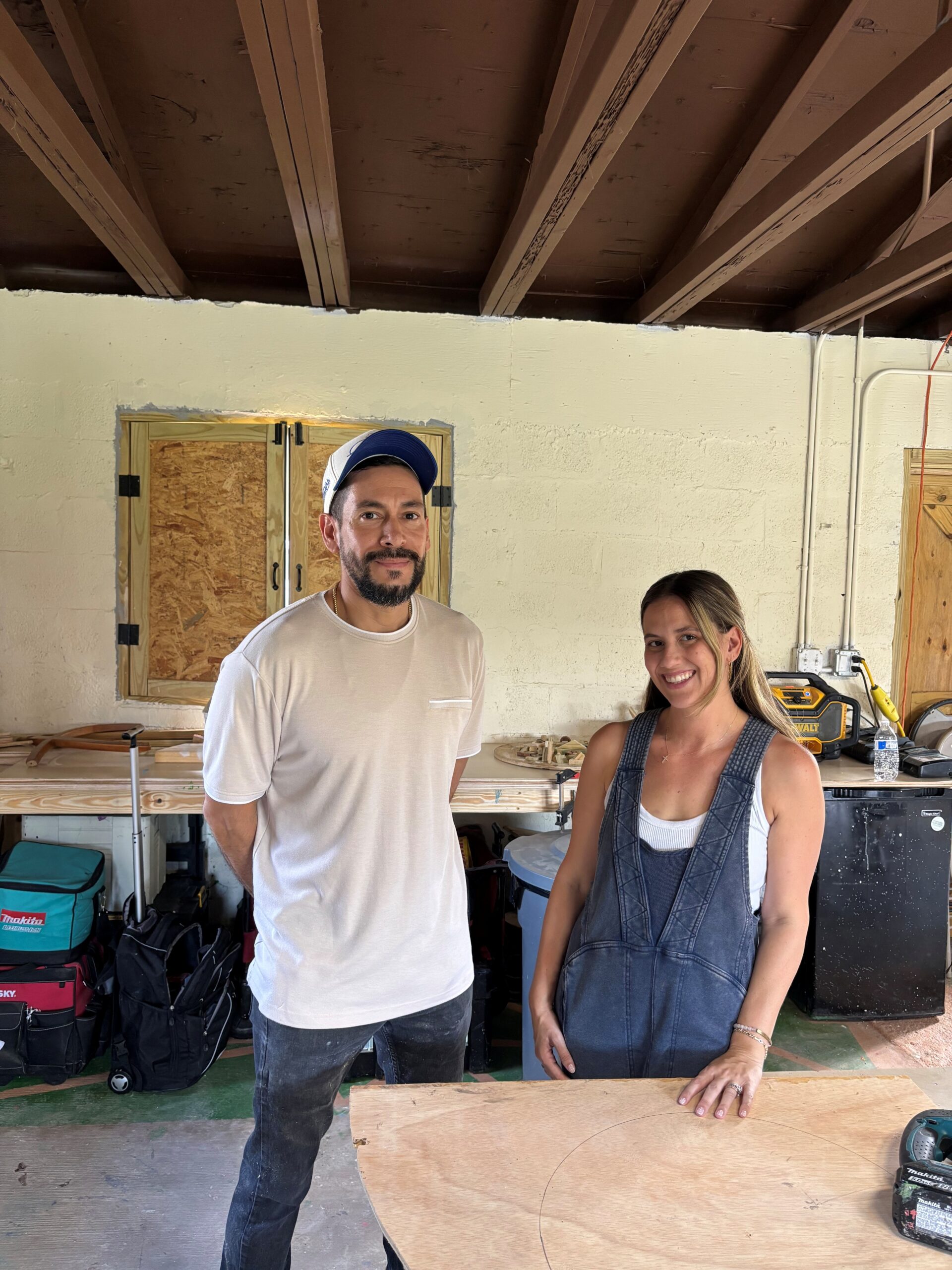
Now, just a few months in, they’re already serving 30 students a week, all in middle and high school. Nearly all of them use education savings accounts (ESAs), the flexible state scholarships that are fueling Florida’s fast-growing universe of à la carte learning.
“They say build it and they will come, and people are coming,” Christine said. “Families are hungry for it.”
The same could be said for à la carte learning in Florida.
Enabled by ESAs, à la carte learning is when families use state support to customize their child’s education completely outside of full-time schools, by picking and choosing from multiple providers. This school year, 140,000 students will do à la carte learning in Florida, up from about 8,000 five years ago, and their families will spend more than $1 billion in ESA funds. As we detail in a new data brief, nothing on this scale is happening anywhere else in America.
As the number of à la carte learners expands, so does the supply of places they can go.
Last year, 4,318 providers received ESA funding in Florida, more than double the year prior. Many of them are tutors and therapists. But a growing number are like Builder’s Workshop, specialized, micro-programs that would have been inconceivable as public education just a few years ago.
Inside Builder’s Workshop, students learn how to operate tools safely and confidently. They build birdhouses, step stools, shoe racks, and in one class I visited, “shields of faith.” Along the way, they pick up habits that rarely come from screens.
“Teaching kids to use tools and build things … builds confidence, responsibility, and real-world skills,” Marvin said. “It teaches them problem-solving, patience, and how to work safely. It also strengthens their math and creativity, gets them off screens, and helps them feel capable of making and fixing things.”
“Plus, from a Christian view,” Marvin continued, “it reflects God’s design for us to create and steward the world around us.”
(Builder’s Workshops offers both secular and Christian classes.)
Some Builder’s Workshop students are members of a Montessori co-op that also uses the property. Some are not. In the rapidly evolving world of à la carte learning, lines blur, and kids, families, and educators cross them freely.

“I just love building stuff,” said student Jasmin Hernandez (no relation to Marvin and Christine), a 16-year-old who wants to be a carpenter. Jasmin spoke briefly between noisy cuts with a band saw.
That DIY attitude is what Builders Workshop wants to cultivate.
“We want them to know they can fix a table if they need to fix a table,” Christine said. But “we also want them to know they can create their own products if they want to.”
Marvin and Christine are fixtures in South Florida’s fine arts scene. Marvin is a longtime artist; Christine has a background in project management. Among other services, their company designs and builds custom display cases, pedestals, and other structures for museums, galleries, and private homes.
So, they know their power tools. They also understand the broader potential.
To date, the expansion of ESAs hasn’t done much to enhance career and technical education. But student interest is growing for those skills and jobs, even as some quarters worry about a lack of qualified teachers. Florida, though, is full of highly trained professionals — builders, craftspeople, men and women skilled in the trades — who could be part of the solution.
Maybe ESAs are the bridge that connects them.
Maybe Builder’s Workshop is a glimpse of what that could look like.
Jasmin’s mom, Michelle Hernandez, said her daughter is already close to graduating because she took so many dual enrollment classes through her prior school. So, Michelle decided to homeschool Jasmin and let her explore more nontraditional classes.
Builder’s Workshop, she said, is “an outlet to be creative but with items that have a purpose. Building things also means not having to wait for others to do it, and she can see her own ideas come to life.”
Jasmin’s 13-year-old brother, Cristian, is also enrolled. Michelle said he looks forward to it because hands-on learning registers more deeply with him. Plus, she said, “He’s a boy. He needs to move.”
Kelly Jacobo said likewise about her son, Malakai, who’s also 13 and taking the class.

Jacobo said her grandfather and great-grandfather were accomplished carpenters, so Builder’s Workshop was perfect. “It kind of runs in the family,” she said. “I’ve been praying for forever that there’d be a woodworking class for kids.”
The backdrop for Builder’s Workshop couldn’t be more colorful. Even though it’s in super urbanized South Florida, it’s hidden down a graded road lined with banana trees. Around the corner is the mango grove, where the iguanas, clearly living their best lives, feast when the fruit is in season.
Alas, this setting is going to fade from the story. The owner recently sold the land, so Marvin and Christine will be looking for new digs soon. They don’t anticipate a problem with demand, however, and the families they serve are devoted.
“We don’t know where or when it will happen,” she said of finding a new place, but “we have an immense amount of faith that more families will join once we open our doors.”

By David Heroux and Ron Matus
In the blink of an eye, à la carte learning in Florida has become one of the fastest-growing education choice options in America.
This school year, 140,000 Florida students will participate in à la carte learning via state-supported education savings accounts, up from 8,465 five years ago. Their parents will spend more than $1 billion in ESA funds.
These families are at the forefront of epic change in public education. Completely outside of full-time schools, they’re assembling their own educational programming, mixing and matching from an ever-expanding menu of providers.
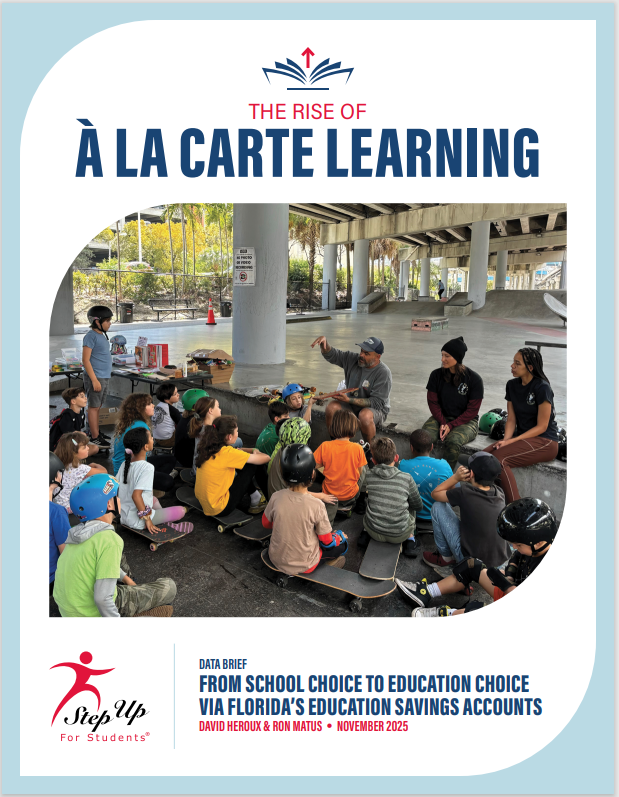
Nothing on this scale is happening anywhere else in America.
To give policymakers, philanthropists, and choice advocates a snapshot, we produced this new data brief. In broad strokes, it shows a more diverse and dynamic system where true customization is within reach for any family who wants it.
ESAs shift what’s possible from school choice to education choice. They give more families access not only to private schools, but tutors, therapists, curriculum, and other goods and services.
Adoption of these more flexible choice scholarships has been booming nationwide; 18 states now have them. But nowhere is their full potential more fully on display than in Florida.
Last year, 4,318 à la carte providers in Florida received ESA funding, more than double the year prior. Many of them are tutors and therapists, but a growing number offer more specialized and innovative services, as we highlighted in our first report on à la carte learning. Former public school teachers are also a driving force in creating them, just as they’ve been with microschools.
How far and fast à la carte learning will grow remains to be seen. For now, check out our brief to get a glimpse of what’s ahead.
MIRAMAR, Fla. — William Ivins moved his family to South Florida ahead of his retirement from the United States Marine Corps and enrolled his children at Mother of Our Redeemer Catholic School, hoping they would reap the same rewards as he did from a faith-based education.
But, as William and his wife, Claudia, would soon learn, that was easier said than done.
A lawyer for much of his 20-year career in the Marines, William needed to pass the Florida Bar Exam before he could enter the private sector. It was a long process that left him unemployed for 19 months.
“It was a struggle,” he said. “My retirement income was not enough to pay for the cost of living and tuition for my children.”
The Ivins' faced a few choices: continue with the financial struggle, homeschool their children, send them to their district school, or move out of state. None were appealing to the Ivins, and fortunately, they didn’t have to act on any.

Florida's education choice scholarships managed by Step Up For Students allow his four children to attend Mother of Our Redeemer, a private K-8 Catholic school near the family’s Miramar home.
“It was a perfect storm of having to retire from the Marines and not really having a job lined up,” William said. “The transition was more difficult than I thought it would be. The income just was not available for us to continue our kids’ education in the way we wanted. Had the scholarship not been there, we would have been forced to move out of state or homeschool them or move them to (their district) school.”
In July 2020, the Ivins moved to South Florida from Jacksonville, N.C., where William had been stationed at Camp Lejeune. William contacted Denise Torres, the registrar and ESE coordinator at Mother of Redeemer, before making the move. She told William the school would hold spaces for his children. She later told him about the education choice scholarships managed by Step Up For Students.
“That was a big relief for him,” Torres said.
At his mother’s urging, William began attending Catholic school in high school.
“That was a life-changer for me,” he said.
He converted to Catholicism and vowed if he ever had children, he would send them to Catholic school for the religious and academic benefits.
Rebekah graduated in May from Mother of Our Redeemer. She had been an honor roll student since she stepped on campus three years ago.
“Rebekah likes to be challenged in school, and she was challenged here,” Claudia said.
Rebekah, who received the High Achieving Student Award in April 2022 at Step Up’s annual Rising Stars Awards event, is in the excelsior honors program as a sophomore at Archbishop McCarthy High School.
“She's an amazing, amazing student,” Torres said. “It’s incredible the way she takes care of her brothers. She's very nurturing. Every single teacher has something positive to say about her.”
Rebekah’s brothers, Joseph (seventh grade) and Lucas (fourth grade), do well academically and are active in Mother of Redeemer’s sports scene, running cross-country and track. Nicholas, the youngest of the Ivins children, is in second grade. He was allowed to run with the cross-country team while in kindergarten, which helped build his confidence.

William had been in the Marines for 20 years, eight months. He served as a Judge Advocate and was deployed to Kuwait in 2003 for Operation Iraqi Freedom, to Japan in 2004, and then to Afghanistan in 2012 for Operation Enduring Freedom.
He retired in May 2021 but didn’t find employment until December 2022. The Florida Bar Exam is considered one of the more challenging bar exams in the United States. He took the exam in July 2021 and didn’t learn he passed until September. It took William more than a year before he landed a position with a small law firm in Pembrook Pines.
Claudia, who has a background in finance, works in that department at Mother of Our Redeemer Catholic Church, located next to the school.
“They have really become part of our community,” Principal Ana Casariego said. “The parents are very involved and are big supporters of our school and church.”
In Mother of Our Redeemer Catholic School and Church, Willian and Claudia found the educational and faith setting they wanted for their children.
“It is a small community environment where you know all the teachers and staff by first name,” William said. “My kids have received a wonderful education in an environment where they don’t have to worry about bullying, and they can really strive to grow and do their best academically.
“The scholarship kept us in the state and kept our kids in the school system that we wanted them to be in. It’s been a great blessing to us.”
JACKSONVILLE, Fla. – Four years ago, Phil and Cathy Watson were distressed and desperate. Their daughter Mikayla, then 12, was born with a rare genetic condition that led to physical and cognitive delays. With her school situation getting worse by the day, they needed options, now.
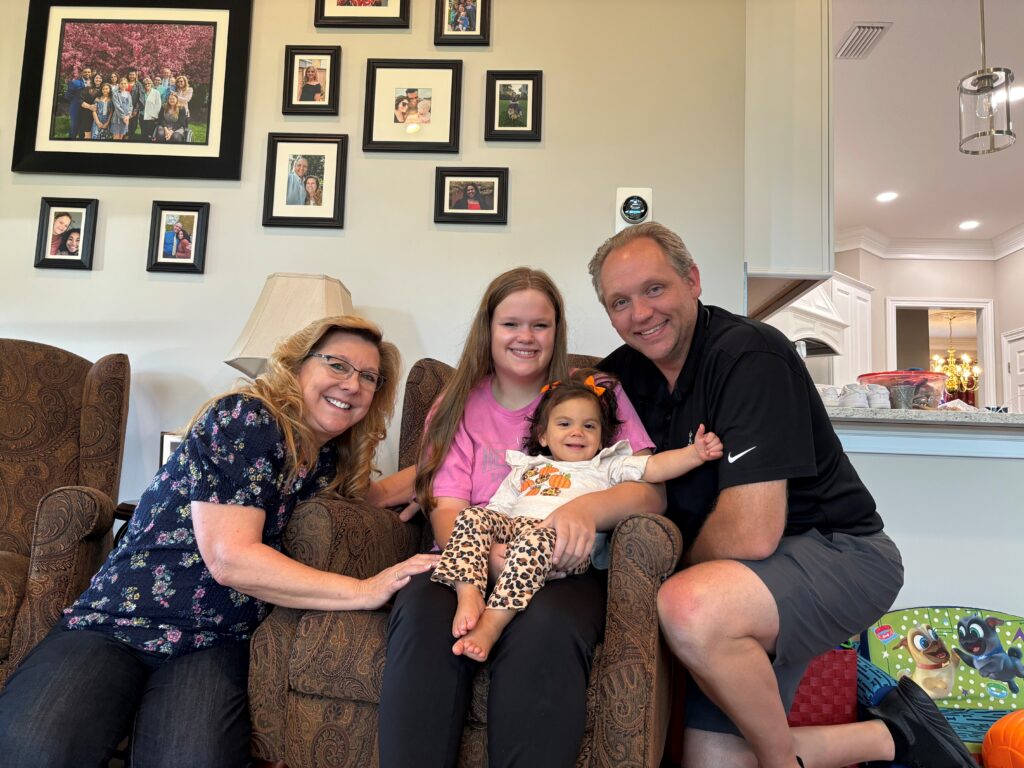
The Watsons were open to private schools. But they couldn’t find a single one near their home in metro D.C. that met Mikayla’s needs. They even looked in neighboring states. Nothing.
One day, though, Phil varied his keyword search slightly, and something new popped up:
A school for students with special needs that had low student-to-staff ratios, transition programs to help students live independently, even an equine therapy program.
The Watsons feared it was too good to be true. Even if it wasn’t, it was 700 miles away.
A destination for education
Florida has always been a magnet for transplants. It’s tough to beat sunshine, low taxes, and hundreds of miles of beach. But as Florida has cemented its reputation as the national leader in school choice, the ability to have exactly the school you want for your kids is making Florida a destination, too.
In South Florida, Jewish families are flocking from states like New York to a Jewish schools sector that has nearly doubled in 15 years. But they’re not alone. Families of students with special needs are making a beeline for specialized schools, too. The one the Watsons stumbled on has 24 students whose families moved from other states – about 10% of total enrollment.
The common denominator is the most diverse and dynamic private school sector in America, energized by 500,000 students using education choice scholarships.
According to the most recent federal data, the number of private schools in Maryland shrank by 7% between 2011-12 and 2021-22. In Florida, it grew by 40%.
“What Florida is offering is just mind blowing compared to Maryland,” Phil said. “If a story like this ran on the national news, people would be beating the door down.”
‘The kid who never spoke’
Phil and Cathy Watson have six children, all adopted. They range in age from 1 to 39. All have special challenges.
“God picked out the six kids we have,” said Cathy, who, like Phil, is the child of a pastor. “We feel very strongly that we were called to do what we do. Our heart says we have love to give and knowledge to share. These kids need that, so it’s a match.”
Mikayla is their fourth child. She was born with hereditary spastic paraplegia, a condition that causes progressive damage to the nervous system.
She didn’t begin walking until she was 18 months old. Even then, her gait continued to be heavy-footed, and she was prone to falling. Her speech was also, in Phil’s description, “mushy,” and until she was 12, she didn’t talk much.
In many ways, Mikayla is a typical teen. She loves steak and sushi and Fuego Takis. Her favorite books are “The Baby-Sitters Club” series, and her favorite movies include “Beauty and the Beast” and “Beverly Hills Chihuahua.” Many of her former classmates, though, probably had no idea.
In school, Mikayla was “the kid who never spoke.”
Checking a box
As Mikayla got older, she and her parents grew increasingly frustrated with what was happening in the classroom. “She was being pushed aside,” Phil said.
Teachers would tell her to read in a corner. Between the physical pain from her condition and the emotional turmoil of being isolated, she was crushed. Sometimes, Phil said, she’d come home and “unleash this fury on my wife and I.”
The pandemic made things worse. In sixth grade, Mikayla was online with 65 other students. Then, three days before the start of seventh grade, the district said it no longer had the resources to support her with extra staff. Instead, she could be mainstreamed without the supports; enroll in a private school; or do a “hospital homebound” program.
The Watsons chose the latter. Three days a week, a district employee sat with Mikayla, going over worksheets that Phil said were “way over her head.”
“All it was,” he said, “was checking a box.”
Just in the nick of time, the school search turned up a hit.
Florida, the land of sunshine and learning options
What surfaced was the North Florida School of Special Education.
“From just the pictures, I’m thinking, ‘This looks legit,’ “ Phil said. “Both of us are like, ‘Wow.’ “
When the Watsons called NFSSE, as it’s called for short, an administrator answered every question in detail. This was not the experience they had with some of the other private schools they called.
At the time, Phil owned a home building company, and Cathy worked for a counseling ministry. They lived comfortably. But they were also paying tuition for another daughter in college.
Thankfully, the administrator told them Florida had school choice scholarships. For students with special needs, they provided $10,000 or more a year.
The Watsons couldn’t believe it. They were familiar with the concept of school choice but didn’t know the details. Maryland does not have a comparable program.
The administrator also told them NFSSE had a wait list. But the Watsons had heard enough.
A fortuitous phone call
A few weeks later, they were touring the school.
The facilities were stellar. Even better, the administrator leading their tour knew the name of every student they passed in the hallways. “We were blown away,” Phil said. “They truly care. “
At some point, the staff ushered Mikayla into a classroom. As her parents watched from behind one-way glass, another student greeted Mikayla with a flower made of LEGO bricks.
For years, Mikayla had been withdrawn around other students. Not here. The shift was immediate. She and the other students were using tablets to play an interactive academic game, and “you could see her turn and laugh with the kids next to her,” Phil said.
Minutes later, he and Cathy were in the administrator’s office, “bawling our eyes out.”
“We said, ‘We’re all in. We have to be here. We’ll be here next week if that’s what we have to do.’”
Days later, the Watsons were at Disney World when NFSSE called. Unexpectedly, the family of a longtime student was moving. The school had an opening.
New friends, improved skills and boosted confidence
Even without the choice scholarship, the Watsons would have moved. At the same time, the scholarship was invaluable. The cost was not sustainable in the long run, Phil said, especially because he had to re-start his business.
The Watsons rented a long-term Airbnb and then an apartment before buying a house in Jacksonville. They uprooted themselves completely from Maryland, including selling their dream home.
“That was hard,” Cathy said. “You’re leaving everything you love.”
Mikayla’s turnaround, though, has made it all worthwhile.
Mikayla was reading at a first-grade level when she arrived at NFSSE; now she’s at a seventh-grade level. She loves the new graphic design class. She won an award for completing 1,000 math problems. “When she got here, she couldn’t add two plus two,” Phil said.
Her verbal skills have blossomed. She eventually told her parents something she didn’t have the ability to tell them before: In her prior school, she didn’t talk because other students laughed at her.
At NFSSE, the “kid who never spoke” speaks quite a bit.
One day, she served as “teacher for the day” in her personal economics class, delivering a lesson on how to make change.
Mikayla is kind and quick to smile. She is surrounded by friends and admirers. “Mikayla is my best friend,” said a chatty girl with pigtails who waited by her side in the hallway.

One boy held the door for Mikayla as she headed to her next class. A second hung her backpack on the back of her wheelchair. A third walked her to P.E.
Mikayla’s confidence is growing outside of school, too.
In the past, she wouldn’t say hi or order in a restaurant. But at Walmart the other day, Phil needed a card for a friend’s retirement, so Mikayla went to find a clerk. She came back and told him, “Aisle 9.”
Mikayla has a bank account and a debit card. She tracks the money she earns from chores. She routinely uses the notes app on her phone to mitigate challenges with short-term memory.
NFSSE, Cathy said, is constantly reinforcing skills and strategies to foster independence. It “pushes for potential,” just like the families do.
Mikayla “sees that potential now; she’s excited now,” she said.
Before NFSSE, the Watsons didn’t think Mikayla could live independently. Now they do.
The school and the scholarship, Phil said, have “given Mikayla an opportunity for her life that we didn’t know existed.”
He credited the state of Florida, too, for creating an education system where more schools like NFSSE can thrive.
If only every state did that.